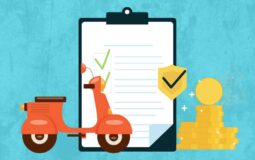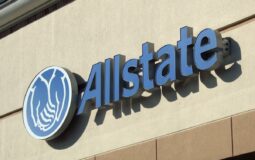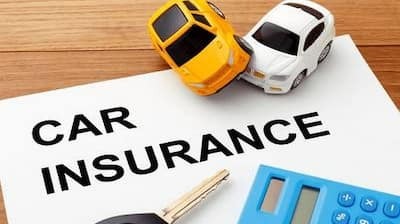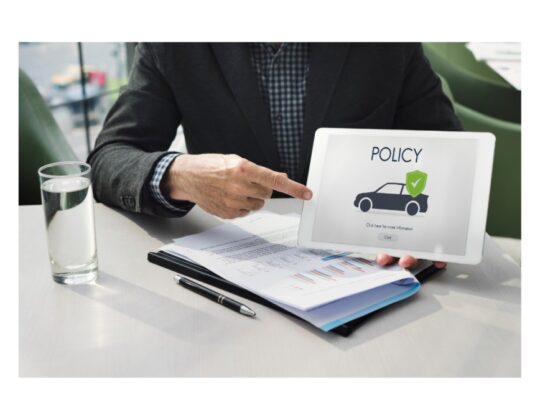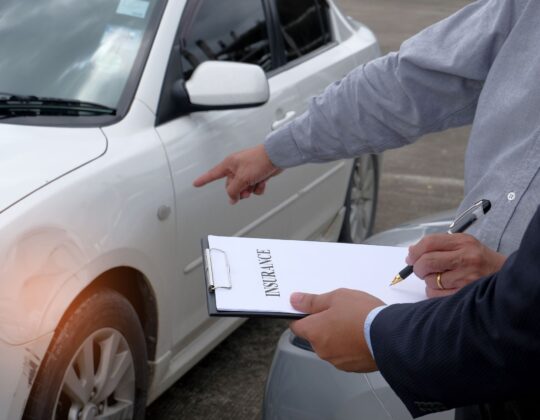Car accidents are stressful events, and understanding how your insurance coverage comes into play is crucial in managing the aftermath. If you’re at fault in an accident, your car insurance coverage plays a significant role in addressing the damages and potential liabilities. In this article, we’ll delve into the intricacies of car insurance coverage when you’re responsible for an accident.
1. Understanding At-Fault Accidents:
When you’re deemed at fault in a car accident, it means that you, or the driver covered by your insurance policy, are responsible for the collision. Determining fault is typically done by assessing the circumstances of the accident, eyewitness accounts, police reports, and any available evidence, such as traffic camera footage. The at-fault driver is generally the one whose actions or negligence led to the accident.
2. Types of Car Insurance Coverage:
Car insurance policies typically consist of different types of coverage, and the coverage that comes into play after an at-fault accident depends on the specific elements of your policy. The main types of coverage include:
Liability Coverage: This coverage helps pay for the other party’s medical expenses and property damage when you’re at fault. It’s a legal requirement in most places and is divided into bodily injury liability (covering medical expenses) and property damage liability (covering damage to the other party’s vehicle or property).
Collision Coverage: This coverage helps pay for repairs to your own vehicle after an accident, regardless of fault. It’s optional but can be valuable in ensuring that your car is repaired or replaced, subject to your deductible.
Comprehensive Coverage: This coverage provides protection for damage to your vehicle that is not related to a collision. It covers events such as theft, vandalism, natural disasters, and collisions with animals. Like collision coverage, comprehensive coverage is optional and may have a deductible.
Personal Injury Protection (PIP) or Medical Payments (MedPay): These coverages help pay for your medical expenses, and sometimes those of your passengers, regardless of fault. PIP is more comprehensive and may also cover lost wages and other non-medical costs associated with an accident.
Uninsured/Underinsured Motorist Coverage: This coverage protects you if you’re involved in an accident with a driver who has little or no insurance. It can help cover your medical expenses and, in some cases, property damage.
3. Liability Coverage and At-Fault Accidents:
If you’re at fault in an accident, your liability coverage comes into play to cover the other party’s expenses. This includes their medical bills if they’re injured and the costs of repairing or replacing their vehicle or other property. Liability coverage is a fundamental component of car insurance, and the coverage limits (the maximum amount your insurance will pay) are specified in your policy.
For example, if you rear-end another car at a stoplight and it’s determined that you’re at fault, your liability coverage will typically cover the other driver’s medical expenses and the repair or replacement of their vehicle, up to the specified limits.
4. Collision Coverage for Your Vehicle:
While liability coverage addresses the other party’s expenses, your own vehicle’s repairs are covered by collision coverage. This coverage is optional, but if you have it, it can be immensely beneficial in ensuring that your car is repaired or replaced, even if you’re at fault. Keep in mind that collision coverage is subject to a deductible, which is the amount you must pay out of pocket before your insurance kicks in.
For instance, if you collide with a tree and it’s determined to be your fault, your collision coverage will help cover the costs of repairing your vehicle, minus the deductible.
5. Comprehensive Coverage for Non-Collision Incidents:
If the damage to your vehicle is caused by events other than a collision—such as theft, vandalism, or a natural disaster—comprehensive coverage comes into play. This coverage is also optional and subject to a deductible. While it won’t cover damages directly resulting from a collision, it provides protection for a range of non-collision incidents.
6. Personal Injury Protection (PIP) or Medical Payments (MedPay):
Regardless of fault, PIP or MedPay coverage can help pay for your medical expenses and, in some cases, those of your passengers. These coverages are no-fault, meaning they provide benefits regardless of who caused the accident. If you’re injured in an at-fault accident, your PIP or MedPay coverage can assist with medical bills, rehabilitation costs, and sometimes lost wages.
7. Uninsured/Underinsured Motorist Coverage:
If you’re in an accident with a driver who is at fault but lacks insurance or has insufficient coverage, your uninsured/underinsured motorist coverage can come to your aid. This coverage helps cover your medical expenses, lost wages, and sometimes property damage. It essentially acts as a safety net when the at-fault party is unable to adequately compensate you for your losses.
8. Reporting the Accident to Your Insurance Company:
Regardless of fault, it’s essential to promptly report the accident to your insurance company. Failing to report an accident can lead to complications, and your insurance company needs to be aware of the situation to guide you through the claims process. Be prepared to provide details of the accident, including the time, location, and any relevant information about the other parties involved.
9. Impact on Premiums:
Being at fault in an accident can impact your insurance premiums. Insurance companies may raise your rates after an at-fault accident, as it is viewed as an increased risk. The degree to which your premiums increase depends on various factors, including the severity of the accident, your driving history, and the specific policies of your insurance provider.
10. Conclusion: Navigating Post-Accident Procedures
Understanding how your car insurance coverage operates after an at-fault accident is crucial for navigating the post-accident procedures with confidence. While liability coverage addresses the other party’s expenses, collision coverage ensures your own vehicle is taken care of, and additional coverages like PIP, MedPay, and uninsured/underinsured motorist coverage offer additional layers of protection.
In the aftermath of an accident, communication with your insurance company is key. Reporting the accident promptly and providing accurate details help streamline the claims process. While being at fault in an accident can have repercussions on your premiums, having comprehensive insurance coverage ensures that you can address the financial aspects of the situation and move forward with confidence on the road.



